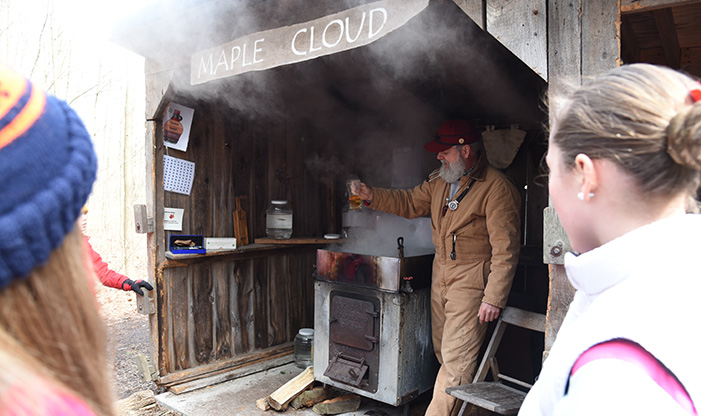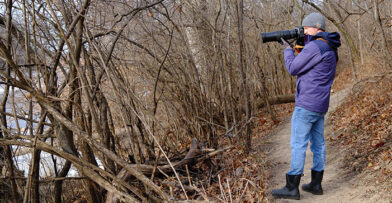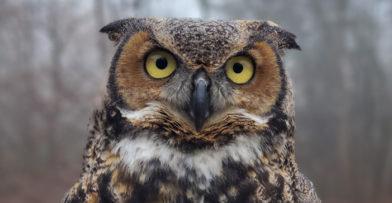Here at Schlitz Audubon, we celebrate all four seasons with equal fervor. But there’s another season we celebrate with extra zest and zeal because it’s the sweetest of them all… Maple Sugar Time!
As winter comes to a close and the spring songs of birds are in the air, we head out to tap our maple trees, gather sap, and cook it down into maple syrup and maple sugar. We can take part in this prehistoric practice, called maple sugaring, thanks to the Indigenous Peoples that lived in North America first, and because of our maple trees! However, there’s another determining factor to making maple syrup besides having the know-how and the right tree.
The Importance of Temperature
The deciding factor is temperature! In our part of the world, we are used to the temperature dictating many things in our lives. But, you might not have realized that it also determines how much maple sap will flow. For this to happen, the temperature must drop below freezing at night. The temperature must also rise above freezing during the day. This magical combination causes pressure within the tree to make sap flow.
Even though maple trees grow other places on the planet, the requirement of this temperature differential is why maple sugaring is a phenomenon specific primarily to northeastern North America. The best place to maple sugar is Quebec. They make over 80 percent of all maple syrup in the world, approximately seven million US gallons! No wonder the maple leaf appears on the flag of Canada. Here in the United States we show our love for the maple trees, too. The maple tree is the state tree for Wisconsin, but also New York and Vermont because, like Canada, the maple tree is emblematic of our region.
Maple Syrup Production in the US
Vermont leads the US in maple syrup production, making about 5 percent of the global supply, followed by New York and Maine. Other significant maple syrup making states include our fair state, Ohio, New Hampshire, and Michigan, all making less than 265,000 US gallons each. The total US production is around 4,200,000 gallons.
If that sounds like a lot, consider that it takes approximately 40 gallons of maple sap just to get ONE gallon of maple syrup! Maple sap is mostly made of water. There’s just a few precious parts of sugar, around two to four percent. There’s a lot of water, around 95%, that needs to be boiled off when the sap is cooked down into the golden goodness of maple syrup. So how many gallons of maple sap does it take to make 4,200,000 gallons of US maple syrup? The answer is 168 million gallons of sap from the maple trees. Then there is the hard work and skill of the maple sugar farmer!
Learn More at our Family-Friendly Event
Discover more at our family-friendly Maple Sugar Time! program on March 22! You’ll learn how to differentiate a maple tree from other species, practice tapping a log with one of our hand drills, and how the sap is turned into syrup! We’ll have a variety of activities to participate in along the trails. Before you leave, visit the sweetest station of all for a delicious treat!


